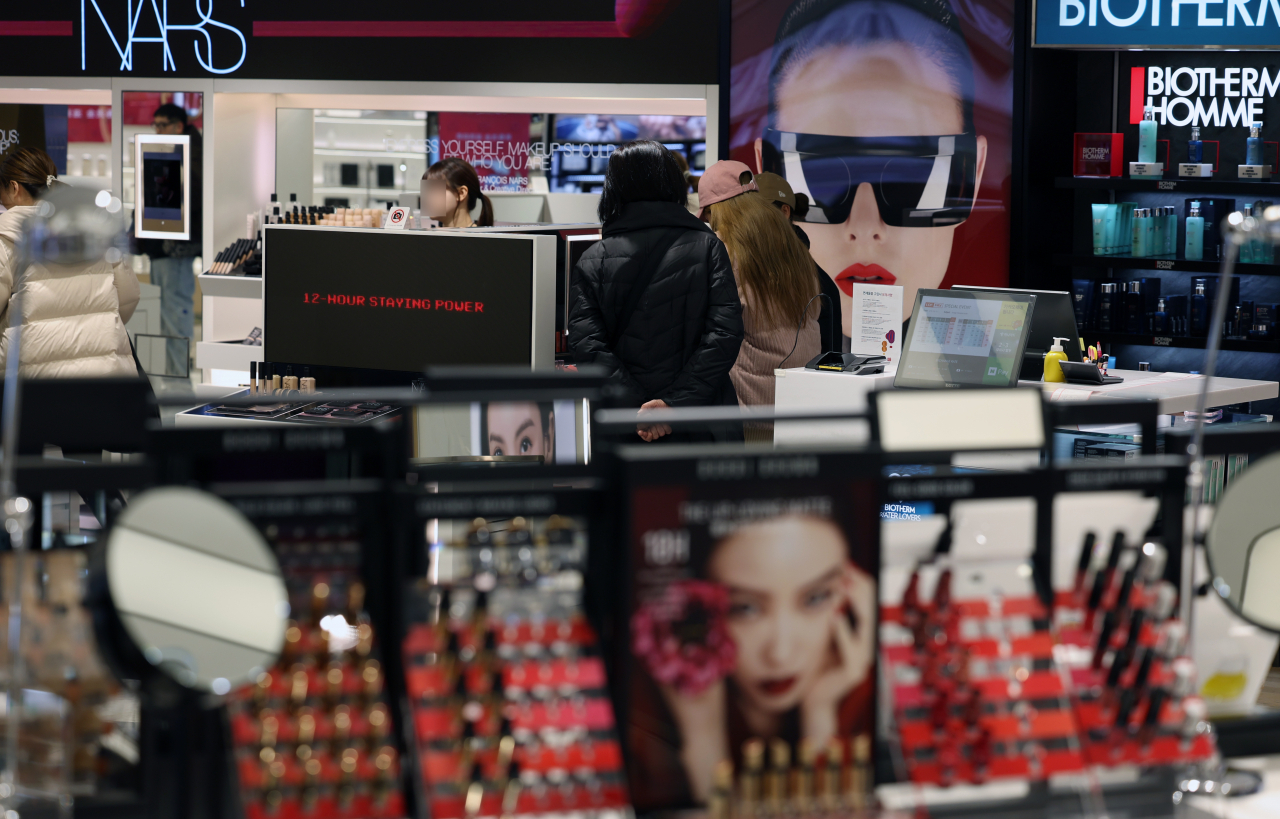 |
Visitors browse cosmetic products at a duty-free store in Seoul. (Newsis) |
The average purchase amount per customer at duty-free shops in South Korea has in the first seven months of this year reached the lowest level in five years, largely due to shifting trends among Chinese tourists and losing their appeal to domestic customers, data showed on Sunday.
According to data compiled by the Korean Duty-Free Shop Association, total sales of domestic duty-free companies reached 7.39 trillion won ($5.45 billion) in the first half of the year, up 13.6 percent from 6.5 trillion won during the same period last year. However, the number of visitors purchasing items at duty-free stores nationwide rose even more sharply, by 45.6 percent, from 9.49 million to 13.8 million.
This disproportionate growth in visitor numbers led to a 22 percent drop in the average purchase amount per customer, which fell to 535,000 won in the January-June period this year from 686,000 won from the same period last year.
The average annual purchase amount per visitor at duty-free stores in Korea had surged from 513,146 won in 2019 to over 1.4 million won in 2020, peaking at some 2.6 million won in 2021 amid the COVID-19 pandemic. Since then, it has steadily declined to around 1.6 million won in 2022 and 622,828 won in 2023.
Overall, Korea’s duty-free industry has seen total sales drop from 24.8 trillion won in 2019 to 15.5 trillion won in 2020. Although sales rebounded slightly to some 17.8 trillion won both in 2021 and 2022, they fell again to 13.7 trillion won in 2023.
Industry experts attribute these challenges to the absence of Chinese group tourists, once key customers known for making bulk purchases at duty-free stores in the country.
“Chinese tourists are favoring individual travel over group tours, and they’re more interested in food tours and pop-up stores than shopping, which has weakened the position of duty-free shops,” said an industry official who wished to be unnamed.
The strong dollar has also deterred domestic customers from making purchases. Domestic customers fell by 36.2 percent to 9.4 million in the first half of 2024 from 14.73 million. Foreign customers decreased by 54 percent to 4.42 million from 9.61 million during the same period.
“Given that duty-free transactions are conducted in dollars, the industry is particularly sensitive to exchange rate fluctuations,” the official said.
In the meantime, these challenges also impacted on the performance of companies within the sector.
Lotte Duty Free recorded a loss of 46.4 billion won in the first half of the year, compared to an operating profit of 41.6 billion won during the same period last year. Shilla Duty Free and Shinsegae Duty Free also saw their operating profits plummet by 83.8 percent and 75.5 percent, respectively, to 7 billion won and 15.8 billion won. Hyundai Department Store Duty Free posted an operating loss of 9 billion won during the same period.
In response to these pressures, Lotte Duty Free said it entered an emergency management strategy in June with cost-cutting measures including a voluntary retirement program.






![[Today’s K-pop] Blackpink’s Jennie, Lisa invited to Coachella as solo acts](http://res.heraldm.com/phpwas/restmb_idxmake.php?idx=644&simg=/content/image/2024/11/21/20241121050099_0.jpg)
